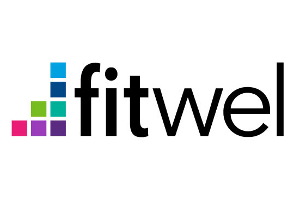How the FITWEL Certification System Can Help Building Product Manufacturers
- < 3 Reasons Why Architects Specify Certain Building Products
- > How LEED Courses Help Building Product Manufacturers Get Specified
It seems every week, a new building certification system is released. Most building product manufacturers are familiar with LEED, Green Globes, and WELL rating systems. A new healthy building certification system called Fitwel was released last year. The Fitwel certification system was created by the US Centers for Disease Control and Prevention (CDC) and the General Services Administration (GSA) with the help of experts in public health.
The Integrated Benefits Institute estimates that health-related productivity losses cost U.S. employers over $225 billion annually. In 2016, Perkins+Will adapted the Fitwel rating system for healthier workspaces. Perkins + Will plan on certifying all of their offices nationwide. In addition, the Fitwel certification system has been lauded by the American Institute of Architects.
“Architects are increasingly considering the health outcomes of their design strategies. Fitwel provides a tool to evaluate the design of their buildings through evidence-based criteria. This offering and the set of strategies that identifies the multitude of health risks within the built environment can be useful as the profession strives to design healthier spaces,” says American Institute of Architects CEO, Robert Ivy.
What is the Fitwel Certification System?
The Fitwel certification assesses building and workplace features against a baseline of criteria that create a health-promoting environment. The workplace features include the design of stairwells and outdoor spaces, proximity to public transit and fitness facilities, indoor air quality, and healthy food standards.
Fitwel Health Impact Categories
The Fitwel certification system utilizes seven Health Impact Categories. The categories include: impacts community health, instills feelings of well-being, increases physical activity, reduces morbidity + absenteeism, provides healthy food options, supports social equality for vulnerable populations, and promotes occupant safety.
Fitwel Certification Sections
The Fitwel Scorecard measures health within twelve major sections that impact the design and operations of a site and building interior. The twelve sections include:
- Location- Workplaces located in more walkable neighborhoods with nearby amenities and public transit access support greater opportunities for physical activity, social equity and foster positive impacts on community health.
- Building Access- Supporting multi-modal access to buildings, increases opportunities for engaging in regular physical activity.
- Outdoor Spaces- Providing onsite or nearby outdoor spaces assists in supporting mental and physical health.
- Entrances and Ground Floor- Ground floors can be optimized to promote improved air quality and access to health-promoting amenities.
- Stairwells- Stairwells present a convenient way for building occupants to add physical activity to their day.
- Indoor Environment- Limiting prolonged exposure to harmful airborne substances and pollutants in indoor environments can improve air quality and reduce risk factors associated with chronic disease, comorbidities and absenteeism for occupants.
- Workspaces- Health supportive workspaces can assist in reducing absenteeism, while also instilling feelings of well-being.
- Shared Spaces- Onsite shared spaces can promote health outside of the individual workspace, by providing areas for physical activity and mental rejuvenation.
- Water Supply- Providing access to fresh water reduces consumption of less healthy alternatives.
- Cafeterias and Prepared Food Retail- Food retail can have a positive impact by elevating healthy food and beverage options onsite.
- Vending Machines and Snack Bars- Providing healthier food and beverage options can reverse the negative health impacts of traditional vending machines.
- Emergency Procedures- Emergency preparedness can improve coordination and timeliness of emergency response, increasing safety during emergency situations.
Fitwel Rating Scorecard
Each strategy within the Fitwel certification system has a point value, based on the strength of evidence and its associated impact on one, or more, of the Health Impact Categories. Design strategies with stronger, multi-faceted impacts receive more points. All registered buildings will receive an automatic Fitwel score to benchmark the building overtime. A Fitwel rating of 1, 2, or 3-stars may be obtained once the building is submitted for certification.
What Does Fitwel Certification Cost?
Fitwel hopes to reach a broad, untapped market and will attempt to limit user expenses incurred from the certification process and implementation of strategies. Cost of Fitwel certification is low due to limited technical knowledge needed to apply for the certification. The self-assessment tool is web and mobile phone based with immediate calculation of rating.
Fitwel’s Research Partners
The Center for Active Design (CfAD) is the licensed operator of Fitwel, in charge of future development and use within the private and public sectors. CfAD is responsible for third party certification of projects. The CfAD is the leading not-for-profit organization that uses design to foster healthy and engaged communities. The Centers for Disease Control and Prevention will remain Fitwel’s research partner moving forward. The General Service Administration will continue to provide leadership on the development of Fitwel.
How Can Building Product Manufacturers Benefit From Fitwel?
AEC firms like Perkins + Will design sustainable buildings that use sustainable products. Whether a building is certified according to the requirements of LEED, WELL, or Fitwel, architects need to specify green products to meet certain certification requirements. For example, building products that have zero VOC emissions would be preferred for a building attempting to achieve Fitwel certification by meeting the Indoor Environment Health Impact category. Here are further examples where building product manufacturers may help contribute to Fitwel Health Impact categories:
- Building Access (bike storage/showers)
- Entrances and ground floor (anti-smoking signage)
- Stairwells (accessible stairs)
- Workspaces (operable shading)
- Water Supply (Drinking fountains/water bottle refilling stations)
- Emergency Procedures (survival kits/defibrillators)
The Future Of Healthy Buildings
According to the EPA, on average, we spend about 90 percent of our time indoors, where pollutant levels are often higher than those outside. Indoor pollution is estimated to cause thousands of cancer deaths and hundreds of thousands of respiratory health problems each year. How will your company address new certification systems like WELL and Fitwel?
For more information or to discuss the topic of this blog, please contact Brad Blank





